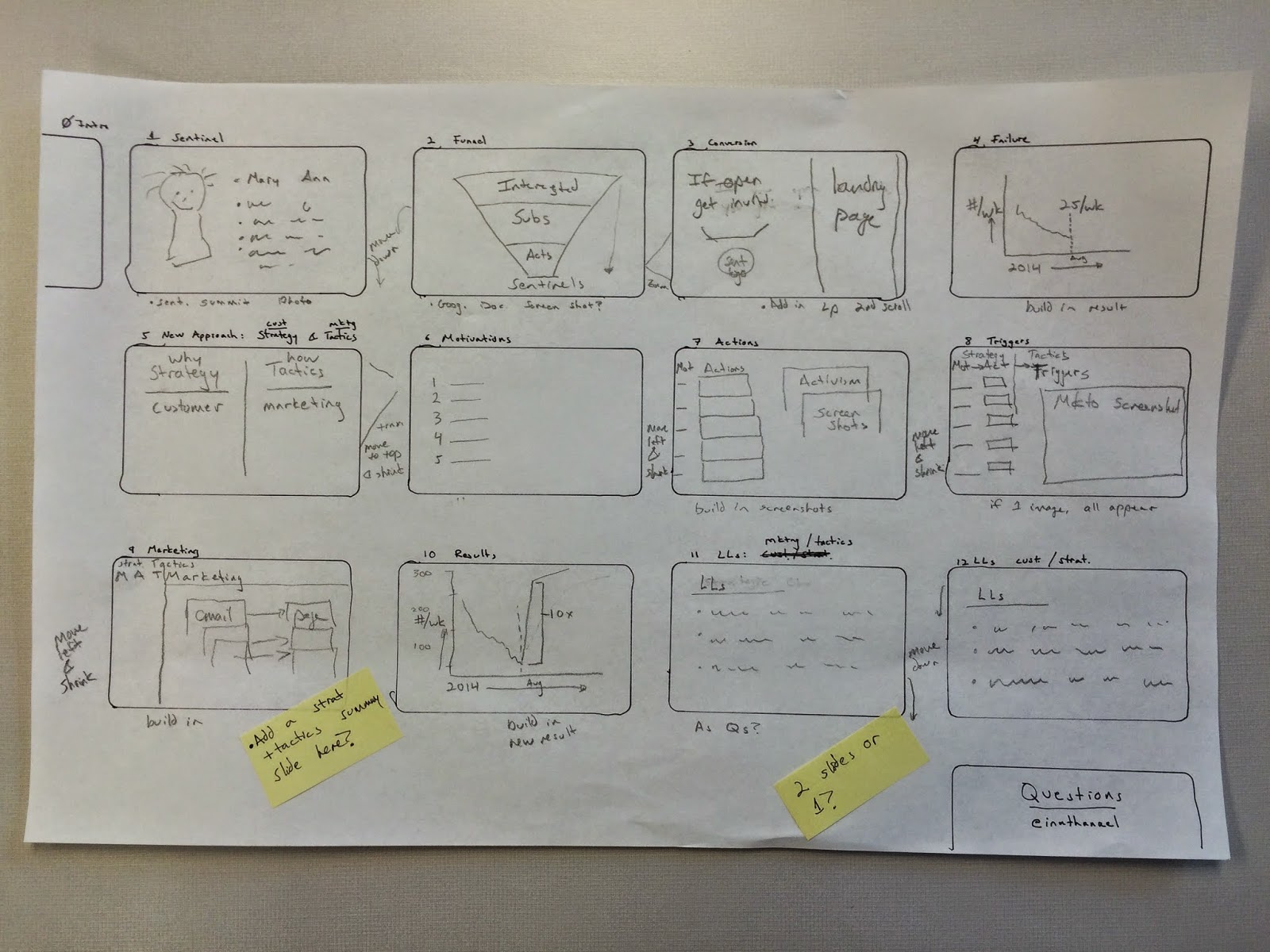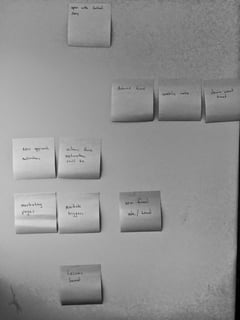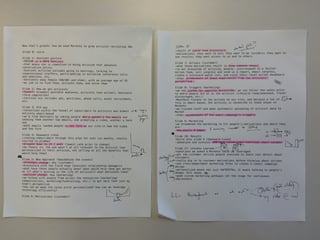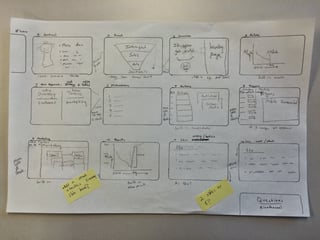Making a Presentation: How I Created My Marketo Summit Presentation

People seem to think my presentations look nice. They sure don't start out that way. The ugly phase is critical to getting it nice.
Here's how I made my presentation for Marketo's 2015 Marketing Nation Summit.
Step one: say it aloud. I pitched my session in a hundred words back in November. In early March, after thinking about my session for a while, I recorded myself explaining what I'd say to some Marketo staffers on the phone. The five minute recording helped me advance from thoughts to structure.
Step two: put it on the board, yes! I listened to the audio a few times and noted the key points on sticky notes. Arranging the notes on the wall turned into a rough outline for the talk. I filled in the empty spaces with additional notes to connect the story.

|
| The wall next to my workspace |
Step 3: rough draft. After telling the story and plotting an outline, I'm finally ready to make a rough draft. I typed bullet points of what I'd actually say to each slide from the wall.

|
| Plain text printouts |
I think it's important to note that while this step is the first real computer-aided step, I hadn't yet started any on-screen editing. After printing my rough draft out, I didn't save the file. I did use a pen and highlighter: drawing out the key themes and sketching potential visuals to show those themes.
Step 4: draw some slides. With top themes in hand and some visuals, I grabbed an enormous piece of paper and drew the slides. Notice: pen for outlines and titles, pencil for drawing. I wanted to make sure I edited ideas into their best form.

|
| Each slide is the size of a business card |
Step 5: opening Powerpoint. (Or Keynote, in my case.) Once I knew what I wanted to make, the software became not a drawing board, but a finishing board. And I think it's way better at that: if I used the templates and defaults as a starting point, my deck would look like everyone else's, but if I use the software to create what I want (visuals that illustrate my key themes), the deck will be memorable.
This step took a while—equivalent to the time of the previous four combined. Instead of being satisfied with whatever worked, I took a lot of time to get the visuals right. It may have been faster had I opened a Powerpoint file first and started drafting the talk. Getting it done right is what honors the audience.
Lessons learned:
- Record yourself talking about an idea to jumpstart your drafting process.
- Sticky notes on a wall let you easily try a few different orderings of slides.
- Allow a lot of time for slide-making, but don't start with a blank Powerpoint.
And last, but not least, here's the final product: